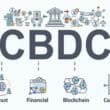Stablecoin, adından da anlaşılacağı gibi “stabil” yani istikrarlı değere sahip olmaya çalışan bir kripto para türüdür. Bilindiği üzere Bitcoin gibi kripto paraların fiyatları zaman zaman aşırı oynaklık gösterebilir. Bu oynaklık, kripto para birimlerinin günlük ödemelerde veya ticari işlemlerde kullanılmasını zorlaştırabilir. İşte bu noktada devreye stablecoinler girer: Sabit bir değeri koruyarak kripto ekosistemi içinde güvenli bir liman olma işlevi üstlenirler. Dijital varlıkların sunduğu hız, şeffaflık ve inovasyon avantajlarını, dalgalanmaların yarattığı risk olmaksızın deneyimlemek isteyenler için stablecoinler oldukça cazip bir alternatiftir.
Bu varlıklar, sıklıkla ABD doları gibi belirli bir fiat para birimine bire bir oranla sabitlenir. Yani, 1 adet stablecoinin değeri çoğunlukla 1 dolara eşit olacak şekilde tasarlanır. Elbette bu sabitlemeyi yalnızca USD ile değil, avro, altın veya farklı varlıklar üzerinden de gerçekleştirmek mümkündür. Bu sayede, kripto dünyasının hızlı ve yenilikçi yapısına adım atmak isteyen yatırımcılar ve işletmeler, aynı zamanda fiyat istikrarını koruma avantajından faydalanabilirler.
Stablecoinlerin Doğuşu: Neden İhtiyaç Duyuldu?
Kripto para piyasasının ilk dönemi, yatırımcılar için büyük kazanç fırsatları sunsa da çok yüksek volatilite (fiyat dalgalanması) barındırıyordu. Bitcoin ve Ethereum gibi öncü kripto paraların değerleri zaman zaman kısa sürede büyük dalgalanmalar yaşadı. Bu volatilite, hem bireysel hem de kurumsal kullanıcılar için öngörülemezlik ve belirsizlik yaratıyordu. Günlük ödemelerde kullanılacak ya da ticari anlaşmalara dahil edilecek bir para biriminin çok kısa sürede değerinin önemli ölçüde yükselmesi veya düşmesi, ekonomik istikrarı ve hesaplamayı güçleştiriyordu.
Bu nedenle stabil bir dijital varlık ihtiyacı doğdu. Her ne kadar fiat para birimlerinin kendi içinde enflasyon veya merkez bankası politikalarına bağlı dalgalanmaları olsa da, kripto para birimleri kadar ani ve dramatik değişimler göstermezler. Bu farkı kapatmak için geliştirilen stablecoinler, blockchainin sağladığı şeffaflık ve hızdan faydalanırken, klasik finans dünyasının tanıdık ve nispeten daha stabil değer yapısını da beraberinde getirerek kripto ekosistemindeki boşluğu doldurmayı amaçladı.
Stablecoin Türleri: Fiat Destekli, Kripto Destekli ve Algoritmik
Stablecoin ekosisteminde, teminat yapıları ve stabilizasyon mekanizmaları açısından farklı modeller öne çıkar. En çok bilinen tür olan fiat destekli stablecoinler, adından da anlaşılacağı gibi geleneksel para birimleri (USD, EUR vb.) veya altın gibi değerli varlıklarla desteklenir. Bu modelde, her 1 stablecoin için 1 dolar (ya da ilgili para birimi) kasada tutulur. Böylece, yatırımcılar stablecoinlerini diledikleri zaman gerçek paraya çevirebileceklerini bilerek güven duyarlar. Burada esas mesele, rezervlerin düzenli denetimler ile doğrulanması ve şeffaflığın sağlanmasıdır. Zira rezervlerin gerçekte tutulan miktarı ile stablecoin arzının eşleşmemesi, stablecoinin güvenilirliğini ve fiyat sabitini ciddi şekilde riske atabilir.
Buna karşılık kripto destekli stablecoinler, değerlerini diğer kripto paralardan (örneğin Ethereum) teminat alarak korurlar. Fakat kripto piyasasında volatilite her zaman olası olduğu için, bu stablecoinler genellikle aşırı teminatlandırma mekanizmasına başvururlar. Örneğin, 100 dolarlık stablecoin basabilmek için 150-200 dolar değerinde kripto varlık kilitlemek gibi.
Son olarak, algoritmik stablecoinler ise herhangi bir teminat rezervi olmaksızın akıllı sözleşmelerle arz-talep dengesini yöneterek sabit değeri korumaya çalışırlar. Bu model, en riskli stablecoin türü olarak görülür; çünkü aşırı satış veya ani talep dalgalanmalarında algoritma bazen yeterli dengeyi kuramayabilir ve beklenen sabit değerin korunmasında başarısız olabilir.
Stablecoin ve Geleneksel Fiat Para Bağı
Stablecoinler her ne kadar kripto ekosisteminin içinde yer alsalar da genellikle değerlerini belirli bir fiat para birimine (çoğunlukla ABD doları) sabitlemeyi amaçlarlar. Bu durum, kripto dünyası ile geleneksel finans dünyası arasında bir köprü görevi görür. Yatırımcılar bir yandan blockchain’in getirdiği hız, şeffaflık ve düşük işlem ücretlerinden yararlanırken, diğer yandan da günlük finansal işlemlerde alışkın oldukları “istikrarlı” değere yaklaşmış olurlar. Böylece, kripto paraların yüksek oynaklığına karşı bir çeşit koruma katmanı sağlanmış olur.
Öte yandan, stablecoinlerin geleneksel fiat para birimlerine bağlanması regülasyon, denetim ve rezerv yönetimi gibi konuları daha fazla gündeme taşır. Merkezi bir kuruluşun kasasında tutulan dolar veya diğer varlıklar, stablecoine güvenin temelini oluştururken, bu kuruluşun şeffaflığı ve düzenli denetimi de büyük önem taşır. Eğer projenin arkasındaki ekip veya şirket, yeterince güvenilir değilse ya da yetersiz rezerv tuttuğu ortaya çıkarsa, ilgili stablecoinin değer istikrarı hızla yok olabilir. Dolayısıyla, kripto ve geleneksel finans arasındaki bu köprü, hem fırsatlar hem de dikkat edilmesi gereken riskler barındırmaktadır.
Stablecoin’lerin Popüler Örnekleri: Tether (USDT), USD Coin (USDC) ve Daha Fazlası
Stablecoin dünyasında birçok farklı proje ve platform bulunuyor. Bunların içinde en eskisi ve en bilineni Tether (USDT)’dir. İlk ortaya çıktığında ismi “Realcoin” olan Tether, zaman içinde piyasanın lider stablecoini haline geldi. Yaratıcıları, her basılan USDT’nin karşılığında kasalarında bire bir oranla ABD doları tutacaklarını açıkladılar. Ancak geçmişte Tether’in rezervleri ve şeffaflığı konusunda çeşitli tartışmalar yaşandı. Buna rağmen, günlük işlem hacmi itibarıyla hâlâ dünyadaki en aktif kullanılan kripto paralardan biri olması, Tether’in piyasa açısından önemini ortaya koyuyor.
Bir başka popüler stablecoin ise USD Coin (USDC). Circle ve Coinbase gibi tanınmış finans ve kripto şirketlerinin iş birliğiyle geliştirilen USDC, daha şeffaf bir rezerv yönetimi politikası benimsemesiyle dikkat çekiyor. Her ay düzenli denetim raporları yayınlayan Circle, kasalarında USDC miktarına eş değer fiat ve kısa vadeli menkul kıymetler tuttuklarını belirtir. Bu sayede, kullanıcılar USDC ile işlem yaparken güven faktörünü daha net hissedebilirler. Tether ve USDC’nin yanı sıra, Binance USD (BUSD), TrueUSD (TUSD) ve kripto teminatlı DAI gibi diğer stablecoinler de hem kurumsal hem de bireysel yatırımcıların radarında yer almaya devam etmektedir.
Stablecoinlerin Teknik Altyapısı ve Blockchain Kullanımı
Stablecoinlerin teknik altyapısı, genel olarak akıllı sözleşmelere (smart contracts) dayalı bir model üzerinde çalışır. Özellikle Ethereum ağı, stabil değer sağlayan bu tokenlerin “akıllı sözleşmeli” işleyişinde uzun süre öncü rol üstlendi. Kullanıcılar, blockchain ağındaki cüzdanları aracılığıyla stablecoinleri saklar, transfer eder ve farklı finansal uygulamalarda kullanabilirler. Transfer süreçlerinde, blok zincirinin sağladığı şeffaflık ve yüksek güvenlik seviyesi devreye girer. Bu sayede, geleneksel bankacılık sistemine kıyasla çok daha hızlı ve düşük maliyetli işlem yapmak mümkün olur.
Stablecoinlerin teknik altyapısında, farklı blockchain ağları ve protokolleri de tercih edilebilir. Örneğin, Ethereum’un yanı sıra Tron veya Solana gibi alternatif ağlarda da USDT, USDC gibi stablecoin sürümleri bulunabilir. Bu çoklu ağ desteği, kullanıcıların daha düşük işlem ücreti veya daha yüksek hız sunan platformları seçme özgürlüğüne kavuşmasını sağlar. Diğer yandan, her ağda akıllı sözleşmelerin güvenliğini ve doğruluğunu sağlamak adına düzenli kod denetimlerinin yapılması büyük önem taşır. Böylece stablecoin ekosistemi, blockchainin sunduğu olanakları en verimli ve güvenli şekilde kullanarak genişlemeye devam eder.
Stablecoinlerin Avantajları: Volatiliteye Karşı Koruma
Stablecoinlerin en önemli artılarından biri, kripto para piyasasının volatil yapısına karşı bir “güvenli liman” işlevi görmeleridir. Kripto piyasasındaki sert fiyat dalgalanmalarından korunmak isteyen yatırımcılar, yüksek oynaklık dönemlerinde varlıklarını stablecoinlere çevirerek değer kaybını minimize etmeyi hedeflerler. Böylece, kripto dünyasının hızlı büyüme ve yenilikçiliğinden kopmadan, aynı zamanda daha sakin bir fiyat hareketi deneyimlenebilir. Özellikle günlük ticaret yapan traderlar için bu çok büyük bir kolaylıktır; çünkü piyasadaki dalgalanmaları anlık olarak takip edip gerekli alım-satım işlemlerini yapmak her zaman mümkün olmayabilir.
Ayrıca stablecoinler, geleneksel bankacılık sisteminden daha hızlı, daha şeffaf ve daha düşük maliyetli işlemler sunar. Uluslararası para transferlerinde günler süren bekleme sürelerini kısaltır, yüksek işlem ücretlerini azaltır ve kullanıcılarına 7/24 erişim imkânı verir. Bu özelliği, özellikle gelişmekte olan ülkeler veya bankacılık sistemine erişimi sınırlı topluluklar için büyük önem taşır. Zira stablecoinler, internet bağlantısı olan herkesin kullanabileceği, teknolojik olarak ulaşılabilir bir değer aktarım ağı inşa eder ve aynı zamanda fiat desteğine bağlı olarak nispeten öngörülebilir fiyat hareketleriyle finansal öngörü sağlayabilir.
Stablecoinlerin Dezavantajları ve Eleştiriler
Her ne kadar stablecoinler kripto para piyasasının volatilitesine etkili bir çözüm önerse de bazı eleştiriler ve dezavantajlar da söz konusudur. Bunların başında, rezerv yönetiminin şeffaflığı ve doğruluğu gelmektedir. Özellikle fiat destekli stablecoinlerde, proje ekibinin gerçekten her bir stablecoin için bire bir dolar (veya başka bir para birimi) tuttuğundan emin olmak için düzenli denetimler yapılması gerekir. Denetimlerin yetersiz kalması veya şirketlerin denetim raporlarında tutarsızlıkların bulunması, stablecoine olan güveni sarsabilir. Tether (USDT) örneğinde olduğu gibi geçmişte yaşanan şeffaflık sorunları, bu eleştiri ve endişeleri güçlendirir.
Buna ek olarak, merkezi kuruluşların kontrolündeki stablecoinler kripto ekosisteminin “merkeziyetsizlik” ilkesine ters düştüğü gerekçesiyle eleştirilir. Bir varlığın değerini ve dolaşımını belirli bir şirketin veya kurumsal yapının kontrol etmesi, kullanıcıların varlıklar üzerindeki tam egemenliğine gölge düşürebilir. Ayrıca algoritmik stablecoin modelleri de zaman zaman dramatik çöküşler yaşamış, teminatlandırma veya akıllı sözleşme mekanizmalarındaki zafiyetler nedeniyle kullanıcılara zarar vermiştir. Bu durumlar, stablecoinlerin her ne kadar “istikrarlı” olarak anılsa da aslında tamamen risksiz olmadığını göstermiştir.
Stablecoin ve DeFi: Merkeziyetsiz Finans Alanındaki Rolü
Stablecoinler, merkeziyetsiz finans (DeFi) ekosisteminin bel kemiğini oluşturacak kadar önemli bir rol oynar. DeFi protokollerinde gerçekleşen borç alma-verme (lending-borrowing), yield farming ve varlık yönetimi gibi işlemler, kullanıcıların kripto varlıkları üzerinde tam hakimiyet sağlaması ve herhangi bir merkezi kurumdan bağımsız olarak finansal hizmetler alabilmesine dayanır. Bu noktada, stabil değere sahip dijital varlıklar hem işlem çiftlerinde istikrarlı bir değer sunar hem de kullanıcıların uzun vadede dalgalanma riskinden kaçınmasına yardımcı olur. Yani, DeFi uygulamalarını kullanırken portföyünüzü tamamen volatil kriptolardan oluşturmak yerine, stablecoinlerle dengelemek daha güvenli bir strateji olabilir.
Örneğin, Ethereum ağındaki popüler DeFi platformlarında, kripto varlıklarınızı teminat göstererek stablecoin borçlanabilir veya stablecoin varlıklarınızı belirli protokollere kilitleyerek faiz geliri (yield) elde edebilirsiniz. Bu yapı, geleneksel bankacılıkta sunulan mevduat faizleri veya kredi imkanlarının ademi-merkezi (merkeziyetsiz) bir versiyonu gibidir. Ayrıca, DeFi sektöründe pek çok stablecoin çiftiyle likidite madenciliği (liquidity mining) yaparak, ek getiri elde etme fırsatları da bulunur. Bütün bu olanaklar, stabil değer özelliğine sahip tokenlerin DeFi’nin büyümesinde kilit bir parça haline gelmesini sağlamıştır.
Stablecoin ve CBDC (Merkez Bankası Dijital Paraları)
Stablecoinler ve Merkez Bankası Dijital Paraları (CBDC), her ne kadar dijital varlıklar olarak benzer görünse de aslında farklı mantık ve motivasyonlarla çalışırlar. CBDC’ler, hükümetlerin veya merkez bankalarının kontrol ve denetimi altında, resmi para biriminin dijital versiyonu olarak tanımlanabilir. Yani, dijital bir “merkez bankası parası” niteliğinde oldukları için, ülkenin yasal para biriminin tüm sorumluluklarına ve statüsüne sahiptirler. Stablecoinler ise özel şirketler, konsorsiyumlar veya topluluklar tarafından geliştirilen, blok zinciri altyapısı kullanan ve değerini genellikle fiat para ya da başka varlıklara sabitlemeye çalışan tokenlerdir.
CBDClerin devreye girmesiyle, dijital ödemelerin daha hızlı, ucuz ve güvenli olması hedeflenirken; stablecoinlerde ise kullanıcıların merkeziyetsiz finans ve kripto ekosistemi içindeki avantajlardan faydalanmaları amaçlanır. Dolayısıyla, CBDC projelerinin yaygınlaşması stablecoinleri tamamen ortadan kaldıracak mı, yoksa her ikisi de farklı ihtiyaçlara mı cevap verecek, bu soru henüz netlik kazanmış değil. Ancak birçok uzman, CBDC’lerin daha katı düzenlemelere tabi olacağı ve finansal denetimlerin devlet elinde toplanacağı bir ortamda, stablecoinlerin sunduğu esnek ve yenilikçi çözümlerin yine ilgi çekmeye devam edeceğini düşünüyor. Böylece, gelecekte merkez bankaları ve özel sektör arasında daha hibrit modeller veya iş birliği alanları ortaya çıkabilir.
Stablecoinlerin Yasal Düzenlemeleri ve Geleceği
Stablecoinlerin hızla artan popülaritesi, düzenleyici kurumların da dikkatini çekmiş durumda. Geleneksel finans dünyası ile yakından bağlantılı olmaları ve büyük çaplı işlem hacimlerine ulaşmaları, onları potansiyel bir sistemik risk veya ekonomik denge unsuru olarak öne çıkarıyor. Bu nedenle, ABD’den Avrupa’ya, Asya’dan diğer bölgelere kadar birçok ülke, stablecoinleri hangi kategoride değerlendireceğine ve bu varlıkların nasıl denetlenmesi gerektiğine dair çalışmalar yürütüyor.
Bazı ülkeler, stablecoinleri dijital varlık sınıfına dahil ederken bazıları da onları geleneksel para birimlerine benzer şekilde regüle etme eğiliminde. Bu çerçevede, stablecoin ihraç eden kuruluşların rezerv kanıtı göstermesi, düzenli denetim raporları sunması ve belirli lisans ya da izinleri alması gibi gereksinimler gündeme gelebiliyor.
Gelecekte stablecoinlere dair düzenlemelerin daha belirgin ve sıkı hale gelmesi beklenebilir. Regülasyonlar sayesinde kullanıcılar, varlıklarının rezervlerce tam anlamıyla desteklendiğinden ve şeffaf yönetime tabi olduğundan emin olabilecek. Öte yandan, çok katı düzenlemeler yenilikçiliği kısıtlayabilir veya bazı projelerin rekabet gücünü azaltabilir.
Bu nedenle, otoritelerin piyasa dinamizmini koruyacak ve yatırımcıları korumaya yönelik dengeli düzenlemeler geliştirmesi kritik önem taşıyor. Zaman içinde, stablecoin projeleri ile regülatörler arasındaki diyalog ve iş birliği arttıkça, bu varlıklar geleneksel finans sisteminin daha doğal bir parçası haline gelebilir.
Stablecoin ve Ödeme Sistemleri: Yeni Nesil Finansal İşlemler
Geleneksel ödeme sistemlerinde uluslararası para transferleri çoğu zaman yüksek komisyon ücretleri, banka çalışma saatlerine bağlı kısıtlamalar ve uzun bekleme süreleriyle gerçekleşir. Stablecoinler ise blockchainin sağladığı hız ve düşük maliyet avantajıyla bu sorunları büyük ölçüde ortadan kaldırır. İnternet bağlantısı olan herkes, dünyanın herhangi bir yerine dakikalar içinde, düşük masrafla değer transferi yapabilir. Özellikle e-ticaret platformları ve küresel iş birlikleri açısından bakıldığında, bu durum işletmeler ve bireysel kullanıcılar için ciddi bir rekabet avantajı anlamına gelir.
Ayrıca stablecoinlerin sabit değer özelliği, günlük mal ve hizmet alım-satımında kriptonun kolayca benimsenmesini sağlar. Bitcoin veya Ethereum ile ödeme kabul etmek isteyen işletmeler, fiyat dalgalanmalarının getirdiği belirsizlik sebebiyle çoğu zaman çekingen davranabilir. Oysa stablecoinlerle yapılan ödemelerde, 1 stablecoinin her zaman belirli bir fiat para değerine denk olduğu varsayıldığından, fiyat istikrarı korunur. Bu da işletmelerin muhasebe, vergi ve fiyatlandırma süreçlerini daha öngörülebilir hale getirir. Sonuç olarak, stablecoinlerin geleneksel ödeme ağlarıyla entegrasyonu arttıkça, geleceğin finansal ekosisteminde tüketicilerden işletmelere kadar geniş bir yelpaze yenilikçi avantajlar elde edecektir.
Stablecoin Ekosistemindeki Yenilikler ve Trendler
Son dönemde stablecoin ekosisteminde öne çıkan yeniliklerden biri, farklı blok zinciri ağlarına yönelik çapraz zincir (cross-chain) çözümlerinin geliştirilmesidir. Kullanıcıların, tek bir ağa bağlı kalmadan, düşük işlem ücreti veya hızlı onay süreleri gibi avantajlar sunan alternatif blockchain ağlarında da stablecoin kullanabilmesi hedefleniyor. Böylece, Ethereum, Solana, Avalanche, Polygon gibi farklı ağlarda USDT veya USDC sürümlerini görmek mümkün hale geliyor.
Bu durum hem stablecoinlerin likiditesini artırıyor hem de kullanıcı deneyimini zenginleştiriyor. Aynı zamanda, bu tür genişlemeler stablecoin projelerinin, ağlar arasında değer transferini hızlandıran köprü protokolleri (bridge protocols) oluşturmasına önayak oluyor.
Bir diğer önemli trend ise merkeziyetsiz stablecoinlerin yaygınlaşması. Merkezi kuruluşlara duyulan güvenin sarsıldığı ya da farklı regülasyonlarla kısıtlandığı senaryolarda, topluluk tabanlı, akıllı sözleşme tabanlı projeler sahneye çıkıyor. Aşırı teminatlandırma veya algoritmik mekanizmalarla istikrarı korumayı amaçlayan bu projeler, yüksek risk-yüksek kazanç profili nedeniyle yatırımcıların ilgisini çekiyor.
Bu alanda özellikle DeFi protokolleri ile entegre çalışan stablecoinler (örneğin DAI) ön plana çıkmaya başladı. Gelecekte, daha yenilikçi teminat modelleri, yapay zekâ desteği ve akıllı sözleşme teknolojilerindeki gelişmelerle stablecoin ekosisteminde çok daha çeşitli ve yaratıcı çözümlerle karşılaşmak mümkün olacak.
Stablecoinlerin Geleceği: Kripto Ekonomisinde Yeni Bir Dönem Mi?
Kripto piyasasının yükselişiyle beraber, stabil değere sahip dijital varlık ihtiyacının uzun vadeli bir gereksinim olduğu görülüyor. Dijital ekonominin her geçen gün daha fazla alanda etkin olmasıyla birlikte, stablecoinler adeta köprü para birimi işlevini üstleniyor. İster merkeziyetsiz finans uygulamaları olsun, ister klasik ödeme sistemlerine dijital entegrasyon, ister NFT ve metaverse ekosistemlerinde yeni kullanım senaryoları… Stablecoinler, bu farklı alanlar arasında değer taşıyan, hız ve esneklik sunan bir ortak payda olarak öne çıkıyor. Geleneksel bankacılığın kapsamlı düzenlemeleriyle tam anlamıyla entegre olduğu takdirde, stablecoin’lerin küresel ticarette dahi etkin bir rol oynayabileceği düşünülüyor.
Elbette, önümüzdeki dönemde stablecoinlerin başarısı pek çok faktöre bağlı: Düzenleyici kurumların yaklaşımı, merkez bankalarının CBDC politikaları, kurumsal yatırımcıların ilgisi, teknolojik altyapıdaki yenilikler ve topluluk katılımı bu faktörlerin başında geliyor.
Stablecoinlerin kripto ekosistemindeki rollerinin her geçen yıl daha da belirginleşmesi, hatta belki de dijital ekonominin temel yapı taşlarından biri haline gelmesi bekleniyor. Bu doğrultuda, stablecoinleri sadece bir “kripto trendi” olarak görmekten ziyade, geleceğin finansal mimarisine yön verecek sürekli bir dönüşümün parçası olarak değerlendirmek daha doğru olacaktır.






























